How To Fish For Trout: 40 Common Questions Answered
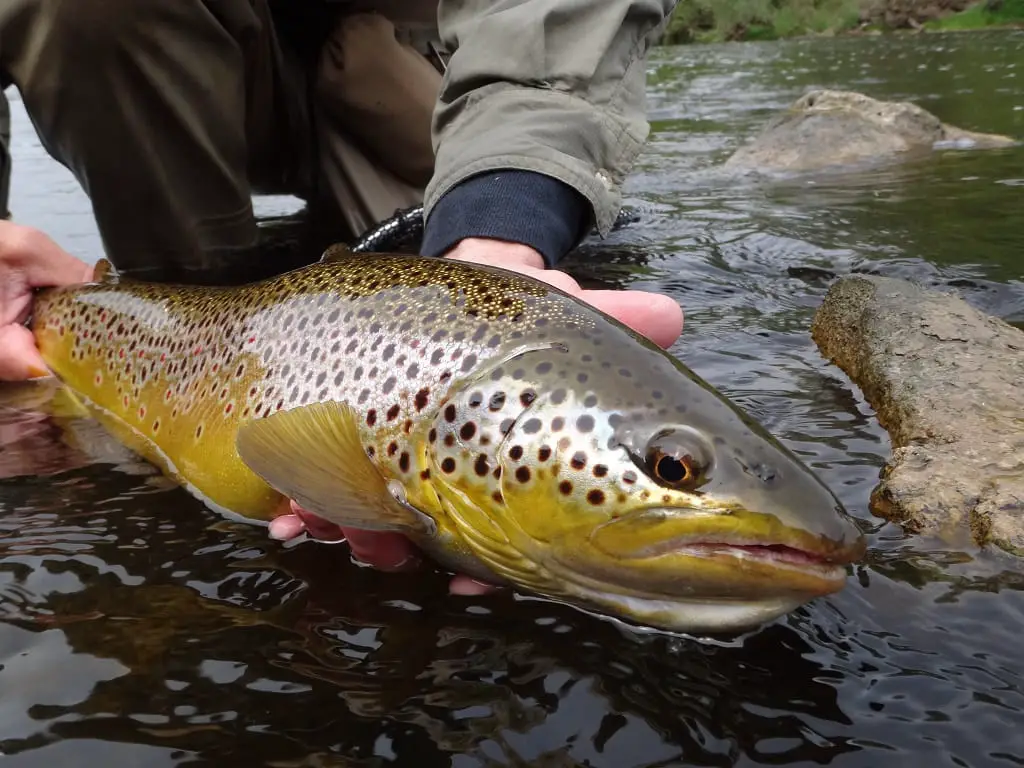
It’s my job as a full-time river guide to teach people how to fish for trout, and there are things that I and other guides do differently to consistently catch a lot more trout than most anglers.
After guiding close to 3000 anglers, I’ve taught plenty of anglers how to effectively fish trout.
Trout Fishing Tips And Advice Every Angler Should Know
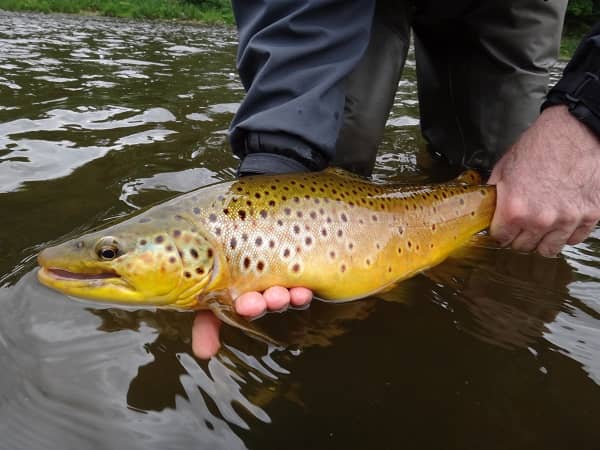
I and my clients caught the fish in this picture over twelve times over a couple of months one summer which provides some very valuable information that most trout anglers would never know.
Catching this fish so many times in the same spot shows me that proper handling and releasing of a trout works.
It also shows me that a big trout like this is territorial, and it’s predictable and will eat many different baits if I present them well.
Because I have caught multiple big trout, some up to 26 inches in the exact same spo,t it also shows me that big fish can co-exist together in such small areas as this.
When you are just learning, or even if you have been fishing for trout for many years, you wouldn’t likely get to know this kind of stuff because you are not on the water seven days a week like river guides would be.
These tips below will be valuable to anyone learning to fish trout in lakes and rivers.
Catch and release works! I fish in some public areas where anglers regularly keep fish and because of that, there are very few big fish around. It’s simply because the guys keep them so there’s just less of them.
Keeping fish, especially in smaller streams could mean less fish for everyone, and it could mean less fish in the future for you, which is why I advise that all anglers practice catch and release.
Air Kills Fish – This means if you plan to release your fish, but you want a picture, it’s best to land them in a net and keep their heads below the water while you get the hooks out and get the camera ready. Take a quick picture and get that fish back in the water in 30 seconds or less.
Fish can survive out of the water for about as long as you can survive underwater without air.
Banking A Trout Can Kill Them – Studies show that dragging fish up on the rocks or a hard bank to land them can kill them by smashing their brains off the rocks when the fish flips around, even if the trout swims away looking healthy they can still die shortly afterward.
Keep The Slime On The Fish – If you are going to release your fish, wet your hands first so you do not remove the protective slime on the trout’s body. It’s also not a good idea to use cloth-type gloves when handling fish because this type of glove removes a lot of the slime on the fish. Leaving the slime on the trout can prevent the fish from dying later from bacterial infections.
Use Barbless Hooks – Use Barbless Hooks if you are going to release your trout. The mouths of small trout are soft, and barbed hooks can rip their lips off or kill the fish when you try to remove them.
As long as you apply steady pressure on the fish, the barbless hooks should not come out during the fight, but they should come out easily when you try to release the fish. Barbless hooks also don’t get stuck in the net as bad.
Check The Water Temperature Before You Fish – If the water temperature is over 68F, trout will stop feeding so you may be wasting your time. If you know the water temps are too warm in that area, you can move to colder river sections where trout will remain active or go to another river.
Land Trout Fast In Warmer Water – When the water is at the warmer temps of 65F or above, it’s best to try to land the trout as fast as possible so that you do not stress them out or kill them after releasing them. This is even more important for bigger trout that get stressed out easier. When the water is really cold they are a lot more hardy and release easier.
Revive Fish Properly – Revive the fish facing into the current so the current goes into their gills in the right direction, and they revive faster.
Trout Face Up River – Almost always, trout will face upriver, so it makes sense to fish them accordingly. Knowing this allows you to sneak up on them better and present your bait from the top of the pool down towards them. Anglers learning how to fish from trout often spook fish before their bait even hits the water.
Trout Stay Put – Unlike trout in lakes that might swim around looking for food, trout in rivers tend to stay in one spot while they feed. I tell my clients to think of the river like a big conveyor belt of food. The trout can sit in one spot all day, all week, and even all year and just feed on food that comes to them.
Fish Fewer Spots – Anglers often spend more time walking and looking for fish than they do fishing. They figure if they fish 50 spots, they will catch more trout than if they fish ten spots, and they often fish most of those 50 spots way too fast and miss fish.
Slow it down, approach the spot slowly, and don’t spook the fish before you even cast, and then cover every inch of a good pool. I do it all the time!
Trout Don’t Always Bite – You may have lots of days when you don’t catch any trout at all. Even advanced anglers have these days from time to time because trout don’t always bite.
I have had days when I fish a spot and catch nothing all day, and then I go back the next morning and land 50 trout in 2 hours. Those 50 trout were all there the day before, but they just were not eating?
Weather patterns and food availability can affect fish and make them not eat at times.
Trout Feed By Sight More – It is proven that trout are visual feeders, so sometimes fake worms, fake eggs, fake grubs, or artificial flies can catch a lot of trout, but only in moving water where trout need to react and grab the bait quickly.
Presentation Is The Key To Catching More Trout – The number one thing I would recommend to new trout angler is to learn how to present your bait well.
Presenting a bait means making it look as natural as possible in the strike zone of the trout.
Avoid Fishing In Dirty Water – Avoid dirty water when trout fishing because if the water is too dirty the trout can not see your bait or your lure. Lures with vibrations and rattles are often best in dirty water and bigger brighter baits are also better than small ones when the water is dirty. Fish may only be able to see 6 inches in front or beside them in dirty water.
Mapping For Spots To Fish – Google Maps can be a great way to find new spots to fish. I will also give you some other tips to find out where to fish in part one of “Learning To Fish For Trout“.
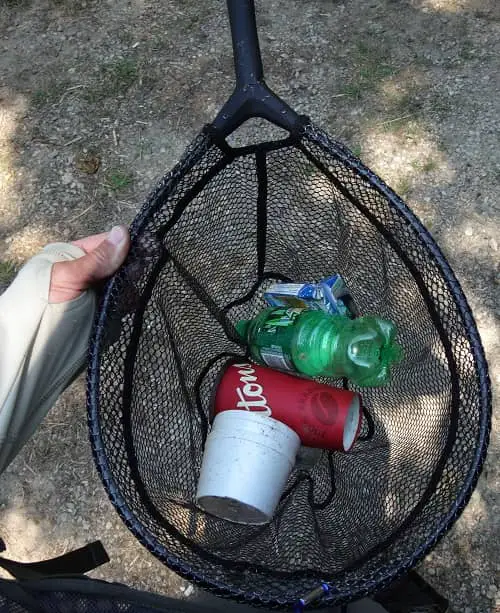
DO NOT LITTER! Litter gives all anglers a bad reputation. Ignorance and laziness not only ruin it for other anglers but ruins it for themselves.
So don’t be one of those jerks everyone hates, and make sure you pick up your garbage. FYI – Your net is a great tool for taking litter back to the car.
Do Not Trespass – Do not trespass; it’s illegal, and you could get charged for it. Enough said.
Hire A Guide Or Find A Mentor – If I had to learn trout fishing all over again, I would hire a pro to teach me. Hiring a pro can take you from struggling to catch a trout or two each time you go fishing to catching 20 or 30 almost every time you go out.
Be Careful Where You Get Your Trout Fishing Advice – Even though there is more information on fishing for trout than ever before, there’s also information overload, and unfortunately with that comes some bad information.
I’ve come across all kinds of bad or misleading advice on trout fishing from so-called experts, bloggers, websites, store employees, and average anglers on talk forums and fishing group boards.
Wire Leaders For Trout – Never use a wire leader when you are fishing with bait for trout because they will see it and not eat your bait. The only time I will use a wire leader for trout is if I am fishing lures in an area that also has pike or musky, which doesn’t happen often.
Snap Swivels For Trout – Never use snaps or snap swivels to attach a bait. Tie the line directly to the hook. The only time I use snap swivels is when I am fishing with some lures like spinners that may twist the line. The Snap swivel will make changing the lure easy, and the swivel part will prevent some line twist.
If I do use a snap swivel for lures, I only use black swivels and not the shiny silver or gold ones. I also use good quality ones that won’t break, bend, or open when fighting a big fish.
What Is The Best Time Of Day To Fish For Trout?
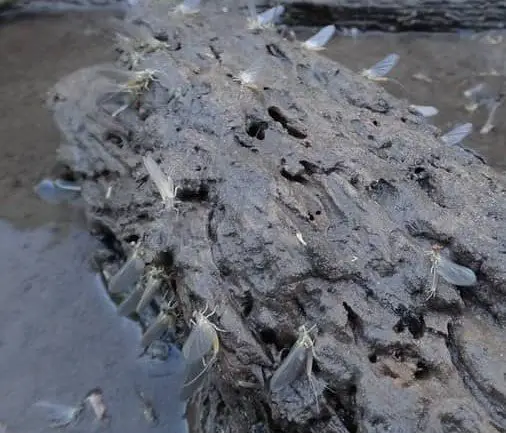
Most articles you read will tell you the best time of day is early in the morning or just before dark, but I tell anglers the best time of the day to fish for trout is when the bugs show up.
Yes, fishing is often best in the morning or the late afternoon, but if there are no bug hatches during these times, the fishing can be slow.
Sometimes there’s a bug hatch a 1pm on a bright sunny day and the fish go on a feeding frenzy. Therefore 1pm on this day is the best time of the day to fish.
Guide Tip: Many areas and many rivers will have what we call hatch charts which will help you determine when certain bugs will appear on the river. Hatch charts are like a calendar and because the insect hatch times are somewhat predictable experts and anglers have been able to make hatch charts that will give you a basic idea of what bugs should be around at a certain time of year.
Some bugs are so predictable you can guess the time of day they should appear and the type of weather that they like to hatch on.
Are Mornings A Good Time To Fish For Trout?
In general, the mornings are a good time to fish for trout since many trout will not feed well at night in the dark, and therefore, they will be hungry in the morning.
First light is when the fish start see their food better, and it’s normal for the insects to become more active later in the morning and as the water warms up a bit. The morning is also cooler, which may mean the river temperatures are better for trout, especially during the very hot days of summer.
During the winter, mornings can often be the worst time to fish because the water is at its coldest and is too cold for the trout to be active – see below for more on that.
Are Evenings A Good Time For Trout Fishing?
Most of the time, evening fishing is good for trout fishing. It’s not uncommon for some species of aquatic insects to mate and lay their eggs and then die just before dark and into the first couple of hours into the night. We call this a spinner fal, which can be fantastic fishing.
Evening time is also a time during the summer when the water temperatures start to cool off and become more suitable after a hot day, and that can also increase fish activity.
When Is The Best Time Of Year For Trout Fishing?
In most areas, trout fishing is best in spring and early summer, which is when the most bug activity happens and when they are most active due to good water temperatures. Spring is also a time when the water temperatures, water flows, and oxygen are at their best.
Is Fall A Good Time For Trout Fishing?
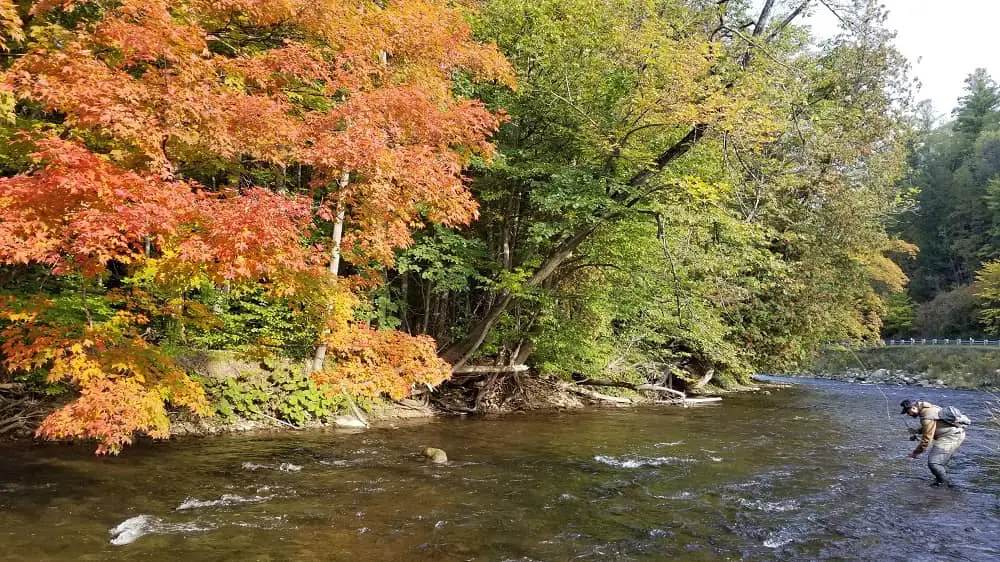
Some trout, like the brook trout and the brown trout, spawn in the fall, and they can be very aggressive before and after they spawn.
During the spawn, it’s best to leave them alone and let them make more trout that you can catch in a few years.
Fishing in the fall can also be a good time for fishing trout because the colder rains and cooler nights will help improve water temperatures and get those sluggish summer trout active again.
Just make sure the fishing regulations permit trout fishing in the fall since I know that some states have delayed harvest rules, or no fishing rules at this time, so check before you go.
Is Winter A Good Time To Fish For Trout?
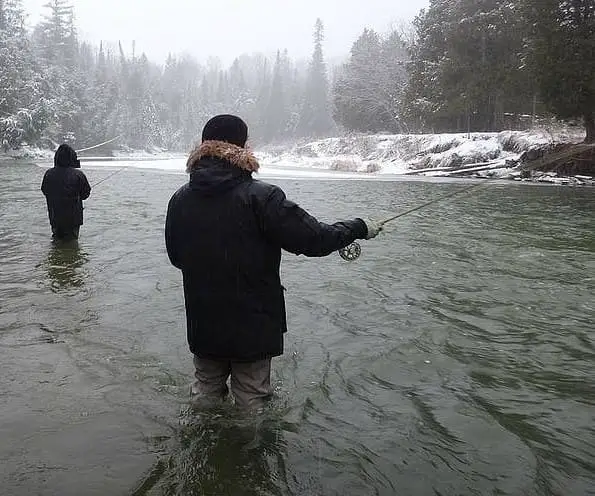
Some good trout fishing can happen during the winter at certain times of day, but under severe cold conditions, the trout will often be less active all day and will not fight as well.
Fishing during the times between 11 am and 4 pm may be the best time during the winter.
Check out my page on Fishing In The Winter – Tips On How To Stay Warm so you can enjoy cold weather fishing without freezing.
A slower presentation, like a bait below a float, is likely going to be better in the winter than using fast retrieved lures. Remember, fish can be sluggish and less aggressive in really cold water so they may not want to chase a lure.
If you fish lures in the winter, slow them down or use lures that move slower with lots of action to entice the trout into biting. You can see some great winter lures for trout on my Lure Fishing For Trout page.
When Is the Best Time Of Day To Fish For Trout In The Winter?
As the water temperatures stabilize or as they start to rise later in the morning and in the early afternoon, the fish can become very active again.
On sunny days, after the sun has warmed up the water a couple of degrees, which usually occurs between 11 am and 4 pm, this is when the water is at its warmest and the fish are most active.
Do Big Trout Eat Small Flies?
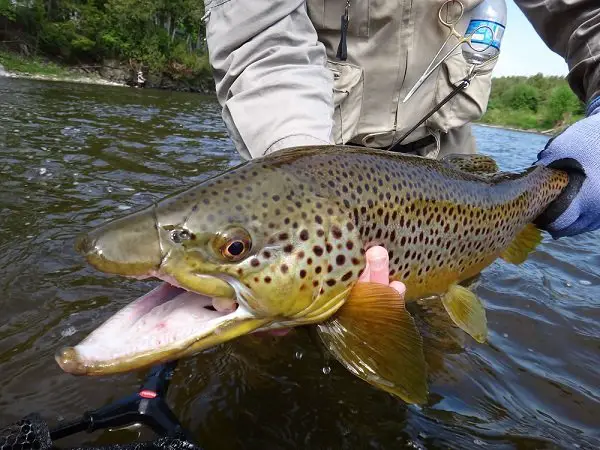
Despite what some other websites say, big trout do eat very small insects and some will eat them often.
My clients, other guides, and I have caught thousands of big brown trout and rainbows over 20 inches on flies that were less than a half-inch long.
Some big trout will even gorge all day on midges as small as a mosquito.
If there are enough small flies in the river or the area, trout like the one in this picture can get big with a diet of primarily small insects.
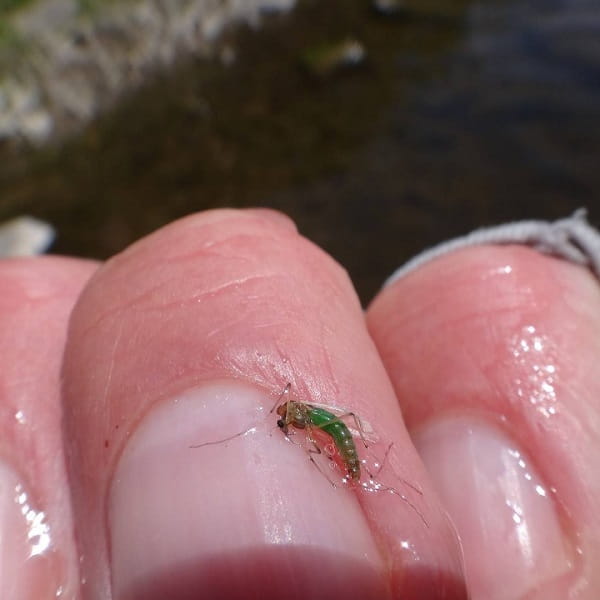
Going too big is often a mistake and I recommend starting small and then going bigger and bigger if the trout do not eat the smaller baits first.
Starting too big can spook the fish and make them stop eating, so start with a more natural and less intrusive size, and you may be surprised.
Be sure to check out the page on the Best Trout Flies.
Is Trout Fishing Good In The Rain?
The simple answer is yes, and the truth of the matter is that I and my buddies try to plan our fishing trips so that we fish on the days when it rains. We do this because we know that the big trout will often become more aggressive in the rain and after the rain and that they are easier to catch then.
For reasons why the trout get so active and tips for fishing in the rain and after the rain, check out my two pages, Trout Fishing In The Rain – Is It Better? and Trout Fishing After Rain – Expert Guide Tactics And Tips
This article is part of a series starting with our very popular article Trout Fishing: A Complete Guide.
For even more information on trout fishing, check out Trout Fishing 101: Get Started With These Guide Tips which covers great content like:
- Fishing licenses and trout tags
- Rods, reels, and lines for trout fishing
- Terminal tackle and other gear you need to get you started in trout fishing
- The baits and lures you will need to fish for trout
- How to find trout rivers near you and where to find trout in the river
- Methods on fishing for trout.
To Be Continued . . . .
Check out part 3 of this 3-part series called How To Catch Trout, and it covers the remainder of the questions anglers should know including, What’s The Best Bait For Trout?
Tight Lines,
Graham

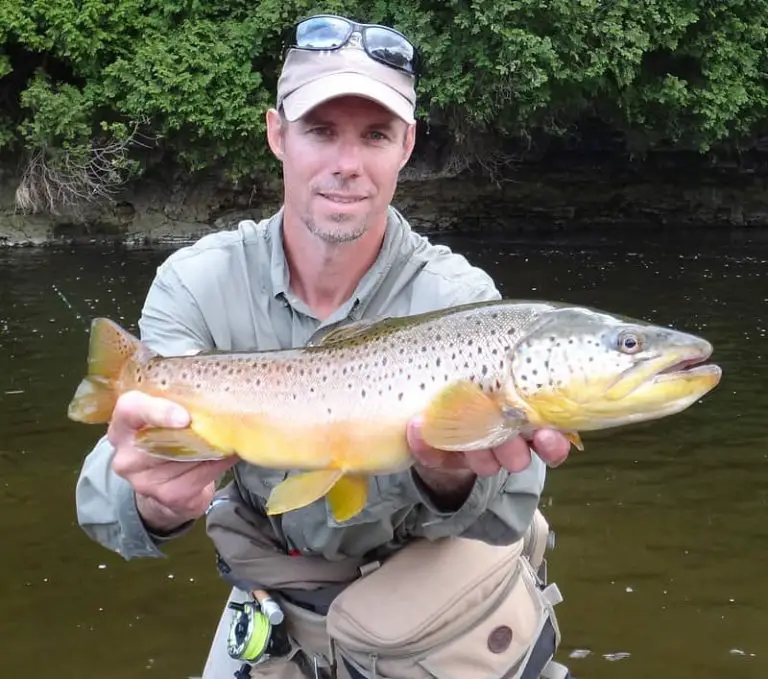
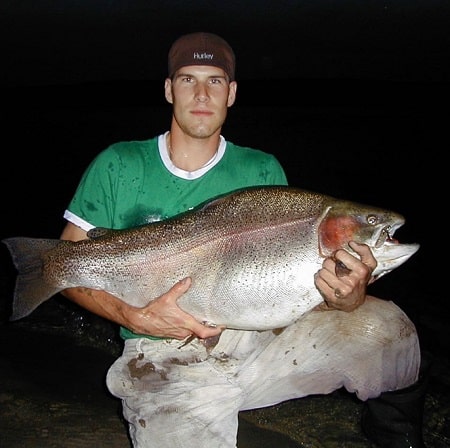
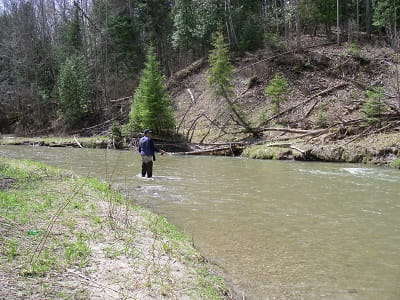
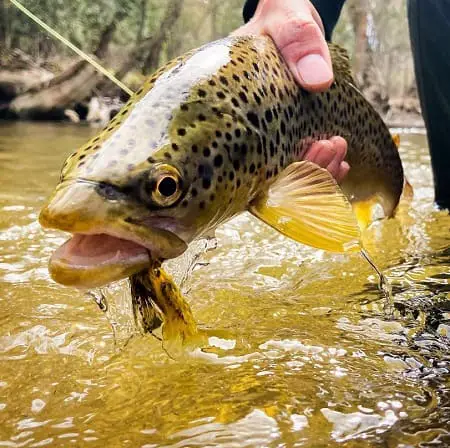
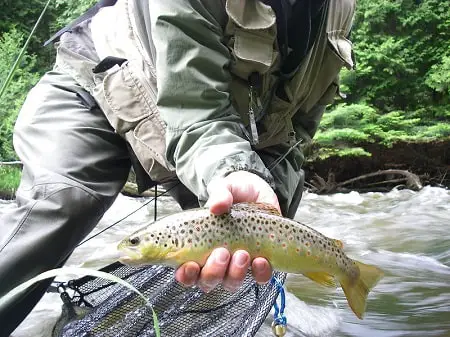
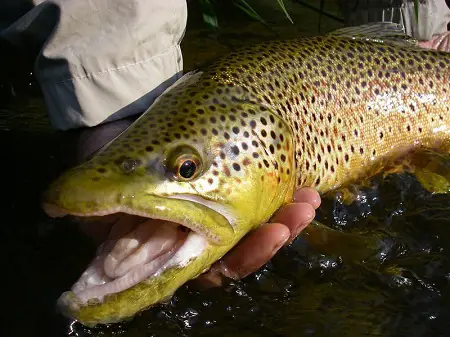
I am going on a fishing trip for trout what line should I use for a spinning reel?
Hi Jade,
It depends on the size of the trout and the type of fishing you are doing. For lures and bigger trout, I might use 8 to 10 pound line, for smaller trout under 3 pounds and using smaller lures or when bait fishing I would recommend 6 to 8 pound lines. In general, a good quality mono 6-pound line should be good for most trout fishing in ponds and small to mid-sized rivers.
Graham